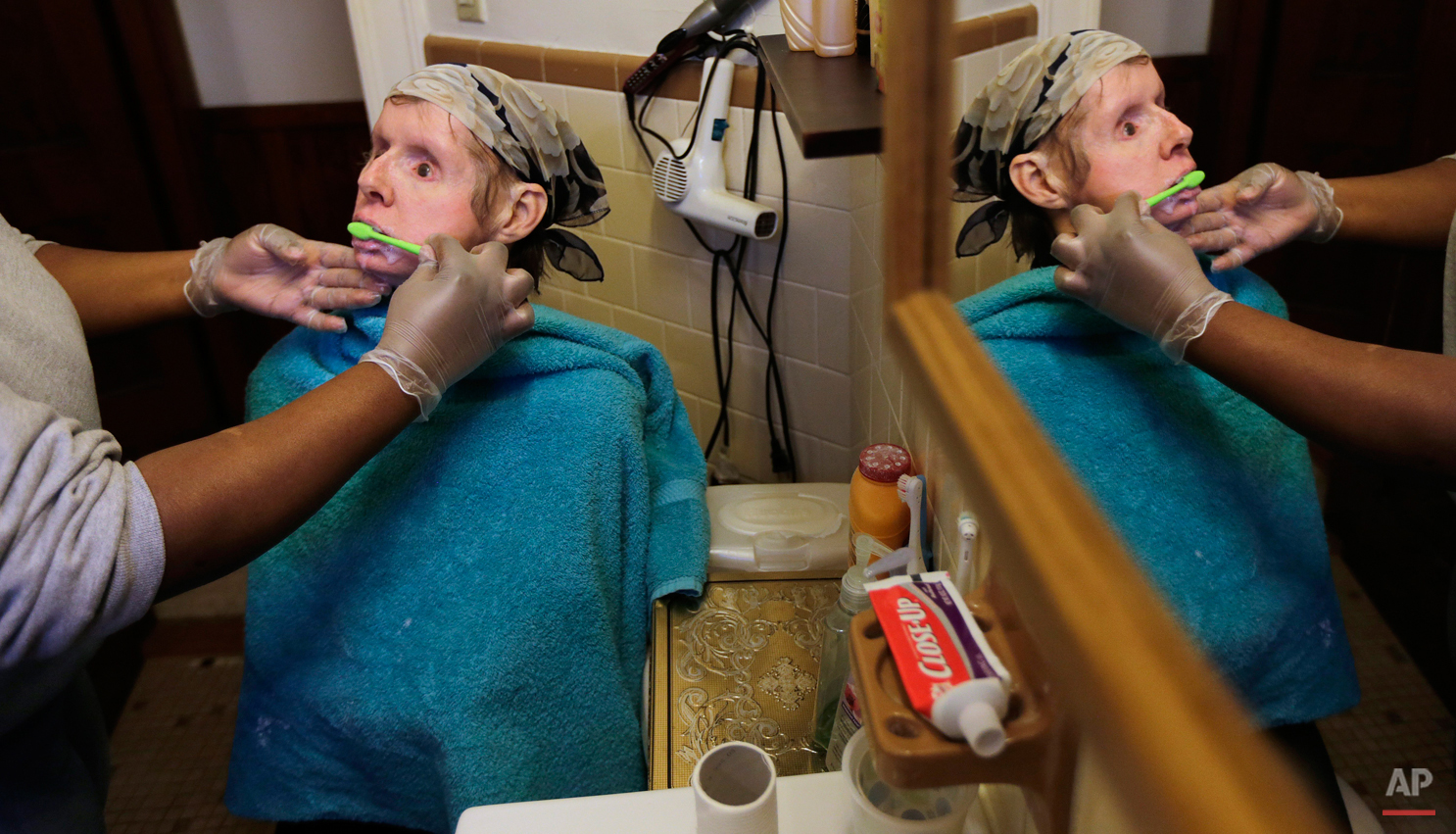U.S. military hopes to learn from victim of chimp attack

Charla Nash never served in the military. She was horribly disfigured, not in combat, but in a 2009 attack by a rampaging chimpanzee. The Pentagon, though, is watching her recovery closely.
The U.S. military paid for Nash's full face transplant in 2011 and is underwriting her follow-up treatment at a combined cost estimated in the hundreds of thousands of dollars, in the hope that some of the things it learns can help young, seriously disfigured soldiers returning from war.
In the coming weeks, for example, Nash will take part in a military-funded experiment in which doctors at Boston's Brigham and Women's Hospital will try to wean her off the anti-rejection drugs she has been taking since the transplant.
Nash jokes about sometimes feeling like a science project. But the 61-year-old daughter of an Air Force veteran said she gets real satisfaction out of letting the doctors use her for research, and sees it as an opportunity to help wounded soldiers and "do something good out of all of this bad."
"They asked me, could they? I said, 'Yeah, I'd be thrilled to help out in any way I could,'" said Nash, a former Connecticut resident who now lives on her own in Boston with the help of part-time aides.
Nash lost her nose, lips, eyelids and hands when she was mauled by her employer's 200-pound pet chimpanzee in Stamford, Connecticut. Doctors also had to remove her eyes because of a disease transmitted by the chimp.
She later received new facial features taken from a dead woman. She also underwent a double hand transplant, but it failed when her body rejected the tissue.
Now blind, Nash spends most of her days listening to AM radio and books on tape — lately, "War and Peace" — in her modest, second-story apartment. She also exercises a couple of days a week with a trainer at a gym to build her strength and stay healthy. A GoFundMe account is being set up to help raise money for prosthetic hands.
Her life today is a stark contrast to her younger years, when she was a barrel racer on the rodeo circuit from the 1970s through the mid-1990s. Over the years, she also did some horse-jumping, worked on a farm and manned a computer help desk. She was working as a dispatcher for a towing company at the time of the attack.
About every six weeks, Nash undergoes lab tests for the military at Brigham and Women's. She is also subjected to MRIs and CT scans to determine how well her brain is sending signals to her new face. In addition, doctors examine how well the arteries are delivering blood to the transplant.
For more, including a video of Nash, read the AP news story.
Below, AP Staff Photographer Charles Krupa recounts his experience covering this story for The Associated Press.
"After spending my first hour with Charla Nash at her apartment, it was easy to forget the chimpanzee attack that left her without much of her face and hands. Her upbeat attitude to enjoy the moment and look positively toward the future just reinforces the good that she wants to do regardless of the challenges ahead.
Charla is completely blind, having two glass eyes, but yet cruises around her modest second-story apartment with ease. She’ll climb down the narrow staircase of her place, just to meet a guest at the front door. She’s even gone to the supermarket on her own, when the weather was decent, to pick up some snacks. She’s a dear woman that understands her limitations, and then exceeds them.
I was fortunate to work with AP reporter Sue Haigh from our Hartford bureau, who was able to get access for an interview. After gaining the trust of Charla, and her friend Shelly, I was able to take the story a step further and was allowed an opportunity to document her life in images.
As an AP staff photographer I’m honored to have a front-row view of history. For me, every day is a bit different. I’ve witnessed and documented some incredible moments, in the sports and news worlds, over the past three decades, but spending time documenting the life of a person like Charla Nash was inspiring. Charla’s rehabilitation efforts are going to make a difference In the future for injured soldiers returning home from war. One day I hope that Charla has an opportunity to visit those soldiers at Walter Reed National Military Medical Center, and inspire them too."
Text from the AP news story, US military hopes to learn from victim of chimp attack, by Susan Haigh.
Spotlight is the blog of AP Images, the world’s largest collection of historical and contemporary photos. AP Images provides instant access to AP’s iconic photos and adds new content every minute of every day from every corner of the world, making it an essential source of photos and graphics for professional image buyers and commercial customers. Whether your needs are for editorial, commercial, or personal use, AP Images has the content and the expert sales team to fulfill your image requirements. Visit apimages.com to learn more.
Written content on this site is not created by the editorial department of AP, unless otherwise noted.
AP Images on Twitter | AP Images on Facebook | AP Images on Google+
Visual artist and Journalist

















